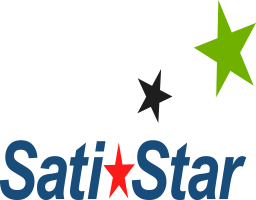Process Flow Diagramming / Process Mapping
Overview
Process flow diagrams are particularly useful for displaying how a process currently works, and enable personnel to uncover problem areas or steps where miscommunications can occur. Process flow diagrams (PFD) or process mapping is a technique used to describe the steps of a process using defined symbols. Flowcharts are maps of graphical representations of a process. PFDs create a picture that allows the reader to visualize the process: “A picture is worth a thousand words”. Steps in a process are shown with symbolic shapes, and the flow of the process is indicated with arrows connecting the shapes. These pictures allow the reader to see the process “inputs” and “outputs”, all of the steps and decisions involved in the process, as well as links to other processes.
These process maps enable you to easily identify where rapid improvements could be made to the process.
This course is designed to provide participants with the theoretical and practical knowledge needed to create and analyze process maps, and identify potential process improvements. This course is designed for personnel at all levels of the organization who need to become proficient at the use of world-class process standardization and improvement tools. There are no prerequisites for this course.
Approach
Depending on the desired outcomes, the duration of this course can be from 1/2 day (as a traditional lecture) to 2 full days (as a workshop, in which participants get to practice their new process mapping skills). We combine theory with a workshop in which participants utilize their new knowledge to create a PFD for a real life example process. The workshop is split into two sessions. In session 1, participants will learn the basic concepts of process mapping and see several real-life examples of process maps. They’ll also learn about the various types of process maps, when to use each type and the pros and cons of each. A rapid and extremely reliable approach to drawing process maps that results in high employee involvement will be discussed.
In session 2, they will have the opportunity to apply these concepts by creating the PFD for a sample process. After creating the PFDs, they’re asked to identify potential problem areas in the process – simply by examining the PFD using SatiStar’s checklist of questions. Participants are split into groups for the PFD exercise after which each group presents their PFDs and their analysis results to the class for discussion.
Finally, participants have the opportunity to create process maps for one of their own real-life processes. This gives them a rapid head-start in applying the new knowledge to their own jobs.
What You Will Learn
- Characteristics of a process
- How to diagram a process
- Process flow elements
- Standard symbols
- Block Flow Diagrams
- Improvement focused PFDs
- Training focused PFDs
- Swimlane PFDs
- Level of detail required in a PFD
- A highly effective and rapid approach
- Benefits of diagramming a process
- Standardization (to document existing processes, to simplify training, for ISO9000, etc.)
- Improvement (for process analysis, continual improvement, best practices, business process reengineering, etc.)
- How to facilitate teamwork and communication
- How to use a process flow diagram to document and standardize your processes
- How to streamline and simplify your processes
- How to look for improvement opportunities in a process flow diagram
- How to identify redundancies, delays, non value-added activities
Training Outcomes
Participants will leave the workshop with the knowledge and skills necessary to rapidly create process flow diagrams for any business process, and be able to analyze that process for potential improvement opportunities.
WHAT PEOPLE ARE SAYING
SatiStar's Experience Makes The Difference!
